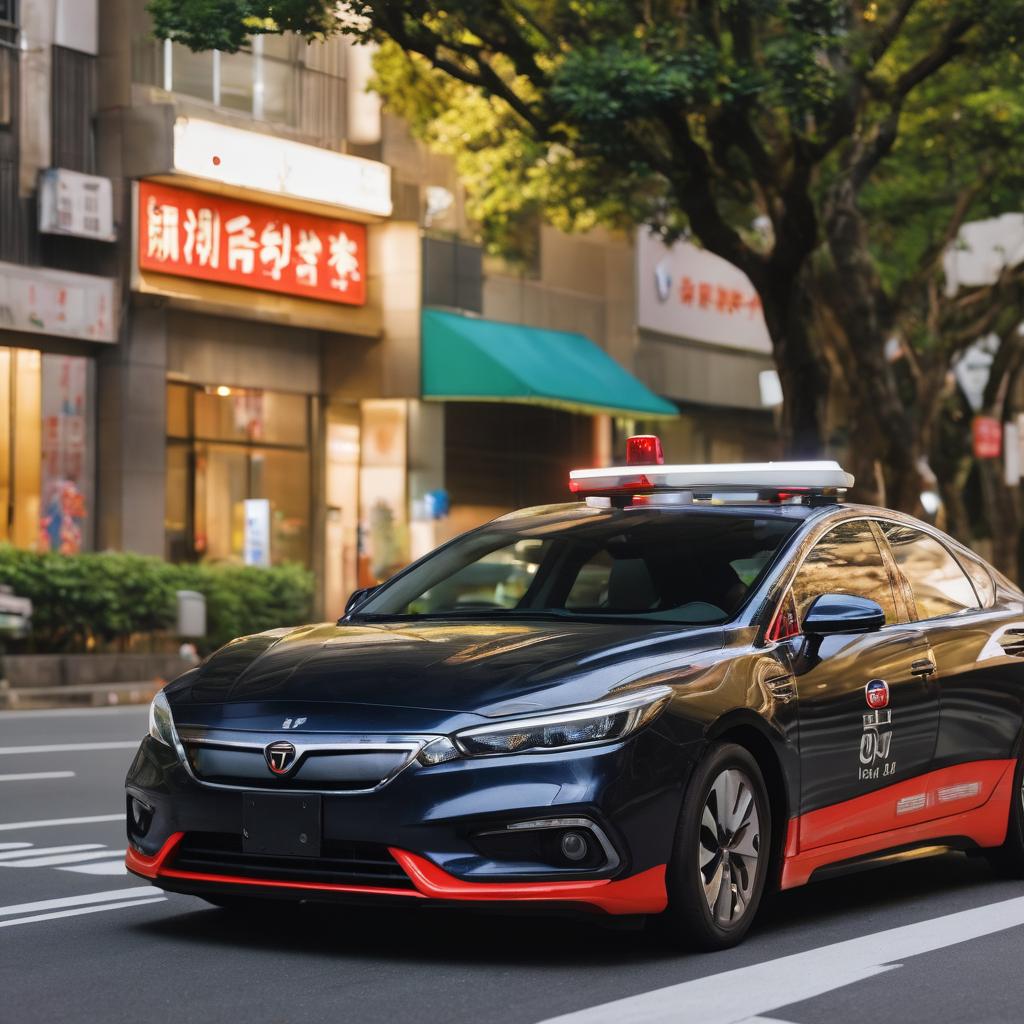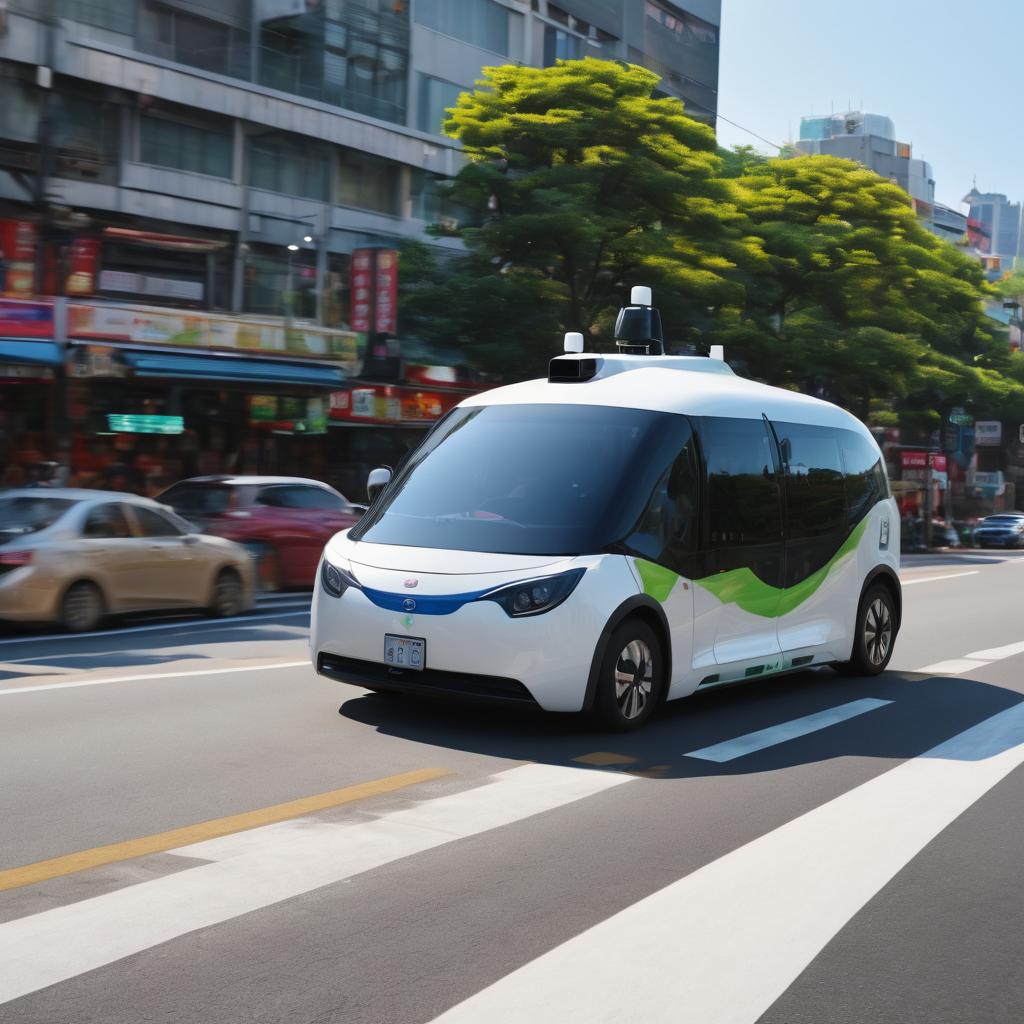 Global transportation has been revolutionised by the astonishing gains made by self-driving vehicles in recent years. A significant advancement in this field is the introduction of Taipei’s self-driving gharry. These self-driving carriages, which blend modern technology and classic charm, are revolutionising how people travel and enjoy Taipei’s dynamic metropolis. This article will examine the influence that Taipei’s self-driving taxis are having on the country’s transport system and delve into the fascinating world of these vehicles.
Global transportation has been revolutionised by the astonishing gains made by self-driving vehicles in recent years. A significant advancement in this field is the introduction of Taipei’s self-driving gharry. These self-driving carriages, which blend modern technology and classic charm, are revolutionising how people travel and enjoy Taipei’s dynamic metropolis. This article will examine the influence that Taipei’s self-driving taxis are having on the country’s transport system and delve into the fascinating world of these vehicles.
The combination of tradition and Technology:
Horse-drawn carriages, or gharrys, have long been seen as a significant part of Taipei’s past and culture. For many years, these quaint cars have been cruising the city’s streets, giving visitors and residents alike a window into Taipei’s colourful history. However, finding a means to reconcile tradition and modernity became essential in a world where technology was advancing at an exponential rate. Let’s introduce the self-driving car.
The self-driving gharrys in Taipei have got a technology facelift while maintaining the historic carriages’ iconic look. These self-driving carriages, outfitted with various sensors, cameras, and sophisticated navigation systems, can securely move passengers around Taipei’s busy streets without requiring a driver. Taipei’s self-driving gharry offers a distinctive and enthralling mobility experience by fusing the best aspects of both worlds.
Increasing Effectiveness and Security:
The increased efficiency that self-driving taxis provide to Taipei’s transportation system is one of its main advantages. These autonomous cars can react to traffic conditions and optimise their routes in real-time by using sophisticated algorithms and real-time data. By doing this, traffic on the city’s streets is lessened and passengers are guaranteed a better, more effective transit experience.
Addressing the Cybersecurity Issues
Autonomous vehicles face significant cyber security challenges as all vehicles become more digitally linked and streamlined. Hackers that attack self-driving systems run the risk of stealing important data, disrupting transportation networks, or causing bodily injury.
The Taipei self-driving gharry uses multiple layers of defence to guarantee safety. Operating systems, location data, sensor inputs, and any gathered passenger information are all protected by firewalls, access controls, and encryption. Regular vulnerability scans find flaws in advance.
Automatic security patches update protections automatically over the air, negating the need for manual maintenance. Devoted security teams monitor system behaviour and continuously search for vulnerabilities to find and fix abnormalities before problems arise.
Attacks aimed at denying service are thwarted via DDoS mitigation. Data is divided up so that, even in the event of a breach, essential car functions stay separate. Additionally, digital “tamper seals” instantly notify authorities of any effort to get unauthorised access. Developers increase resilience against intricate and dynamic digital threats by actively collaborating with cybersecurity authorities and doing rigorous testing. Public safety is still of utmost importance as autonomous services increase accessibility for everyone.
How Do You Operate a Taipei Self-Driving Gharry?
You may be wondering how a carriage through Taipei’s winding streets without a driver. The solution is a technological symphony that includes radar, cameras, and sensors.
Sensors
The gharry’s eyes and ears are these. They can read traffic signs, identify obstructions, and even gauge the speed of other cars. Navigation at night is safer since infrared sensors can operate in low-light conditions.
Cameras
An expansive perspective of the gharry’s surroundings is offered via several cameras. They aid in the gharry’s decision-making by allowing it to recognise bikes, pedestrians, and other vehicles.
Radar
Radar technology uses environmental scanning to determine the proximity and velocity of adjacent objects. It’s especially helpful in bad weather, such as rain or fog.
Advantages of Autonomous Gharries
Compared to regular taxis and buses, self-driving electric gharries provide several benefits.
Sustainability
Air quality and the environment are protected by zero local emissions.
Accessibility
All riders can use it; there are no ramps, low floors, or stairs.
Cost-effectiveness
Less expensive than private travel options are shared car fares.
Easy Access
Use the user-friendly app to quickly and easily request trips around the clock from anywhere.
Trustworthiness
Artificial Intelligence guarantees punctuality and prevents traffic bottlenecks.
Mobility
Networks of public transport can go farther with first/last mile connections.
The Restrictions: ROOM for Improvement
The Taipei self-driving gharry is a marvel of technology, but it has certain drawbacks.
Stage of Development
The testing phase for these carriages is still ongoing. This indicates that they are not yet infallible and that in intricate or erratic situations, human involvement may be necessary.
Specific Areas
The arrays are now limited to particular areas of Taipei. To increase the extent of their operations, they will need to get beyond technological and regulatory obstacles.
Human Doubt
Another barrier is public acceptability. Trust in technology must be earned, and that will require time and satisfying experiences.
Safety Data for Self-Driving gharRY
According to a 2020 Rand Corporation study, autonomous vehicles (AVs) can reportedly avert over 90% of human error-caused auto accidents. Roughly 94% of crashes involve human error, according to NHTSA data.
According to Waymo’s autonomous mileage data, in 2020–2021 there was one accident involving one of their cars for every 11,000 autonomous miles. In contrast, human-driven automobile accidents occur in the US on average once every 436 miles.
Based on statistics from January 2017 to May 2018, Tesla reported that the crash rate for their cars with autopilot and auto-steering active is 0.2 accidents per million kilometres driven. Compared to the national average of roughly two crashes per million miles, it is over ten times lower.
Automated cars are more adept than humans at recognising and reacting to other road users, according to a 2021 study from the Transportation Research Institute at the University of Michigan. When it came to emergency braking, autonomous vehicles outperformed average human drivers by four seconds.
Sustainability Takes Centre Stage
Taipei’s self-driving gharries are notable for their steadfast dedication to sustainability. They are essential in cutting carbon emissions, which is a critical first step in the fight against urban pollution because they are electrically driven cars. These gharries’ exceptional energy efficiency raises the bar for sustainable urban transit and supports international initiatives aimed at a more environmentally friendly future.
Tips To Make Your Gharry Tour Extraordinary
The ideal period to enjoy Taipei self-driving Gharry depends largely on the weather in Taipei. The city has semitropical weather; the second and fourth quarters of the year, from April to June and September to November, respectively, offer pleasant conditions for Taipei self-driving cars. When the weather is uncomfortably cold, these months are typically ideal for Taipei self-driving tours. You may take advantage of Taipei’s stunning parks, gardens, museums, cathedrals, and much more during this time of year.
While gharries are cool, learning to drive oneself is not easy. Take breaks during your journey to rejuvenate yourself and your car as well. Stay at the rest stop during the voyage to relieve your fatigue by sipping tea or water and inspecting the outside of your car, especially the tyres.
To what destination are you heading? The Gharry specialist eventually leads the way. Get ready to learn the names of the streets, roads, and locations
In short:
The self-driving gharrys of Taipei are a thrilling fusion of innovation and tradition, embracing autonomous technology’s potential while encapsulating the spirit of the city. These self-driving carriages are reshaping Taipei’s transport landscape with their capacity to increase productivity, boost security, encourage accessibility, and support sustainability. With their continued development and growth, self-driving gharrys have the potential to become an essential component of Taipei’s urban landscape, providing both locals and tourists with an exciting and cutting-edge way to get around the country’s capital.
Answers to Common Questions (FAQs)
Is it simple to drive in Taipei?
Yes, you will love driving in Taipei if you are a competent driver and familiar with the local traffic laws.
Is it safe to drive on your own in Taiwan?
Self-driving is the best option for a Taipei tour if you observe the tight driving regulations. Taiwan is a sophisticated country with strict driving regulations for your safety.
In Taipei, whose side is in charge?
Taiwan’s most well-known city is Taipei, and left-hand driving is the norm there.
Is the Taipei self-driving Gharry Uber?
Yes, Taipei self-driving gharry is available at all automobile rental companies in Taipei.
Is a car necessary in Taipei?
Taiwan is a developed nation; whether you decide to drive a car or not is up to you.








